PowerPoint Accessibility
Sharing and Exporting
On this page:
Sharing
Best practice is to share material in advance of a meeting, presentation, or class.
- This allows users to check for barriers beforehand
- All users can take additional, in-depth notes and understand terminology and names with greater comprehension
- Users that experience barriers can zoom in or adjust the documents to their viewing preferences
Read-Only and Restrict Editing
Read-Only and Marked as Final
You may wish to share your document as Read-Only or Final.
To do so:
- Navigate to File > Info
- Open the Protect Presentation menu
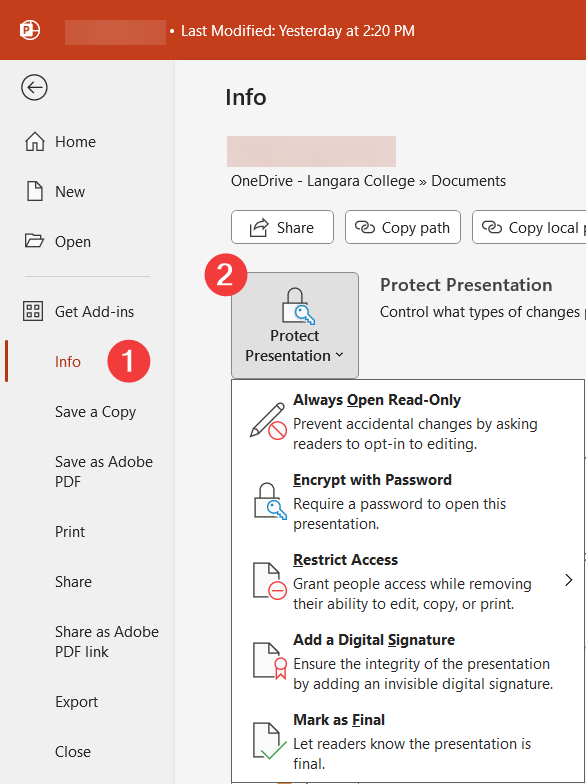
- Select Always Open Read-Only to prompt users to opt-in to editing or Mark as Final to display a message reminding users the presentation is not to be edited.
Restrict Editing
If you are concerned about the content of your PowerPoint being changed, you can restrict editing so other users can only access the file as read-only.
- Select File > Save As and click Browse
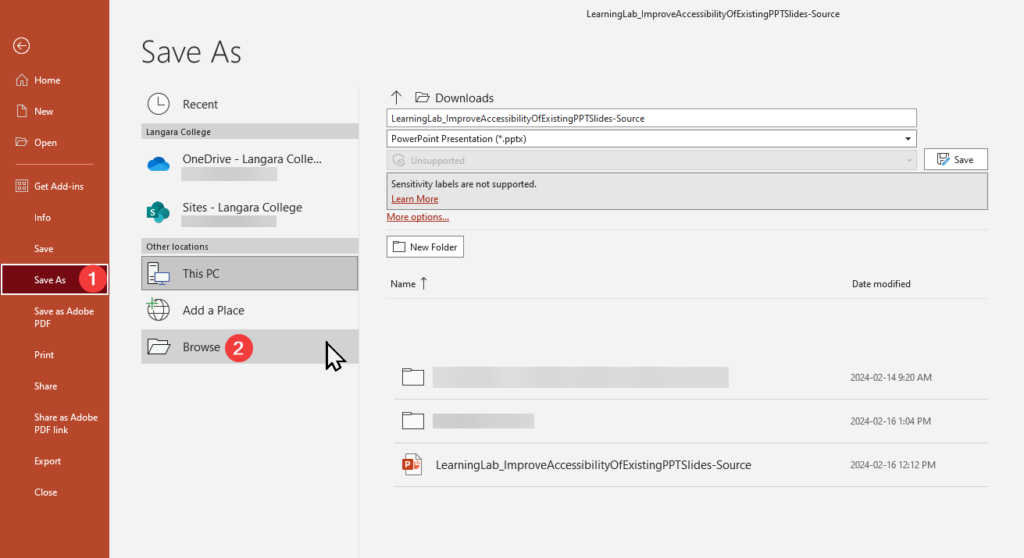
- Choose a local save location and open the Tools menu and open General Tools…
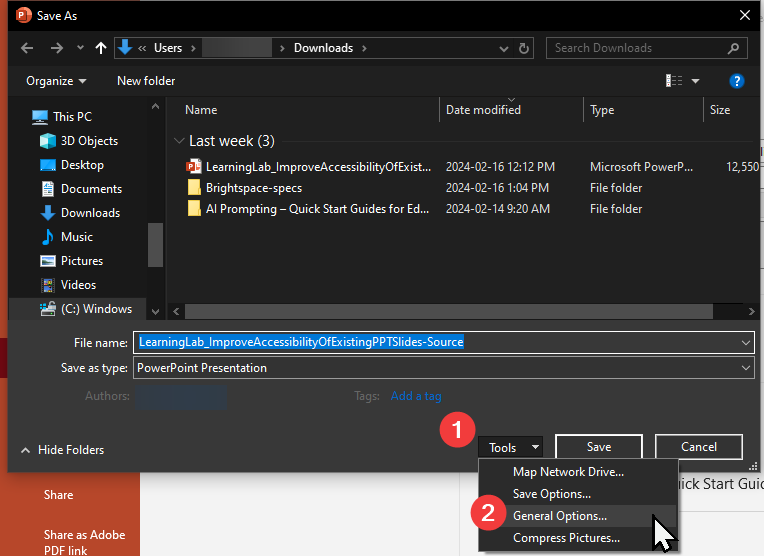
- Set a password in the Password to modify: field, click Ok, and confirm the password.
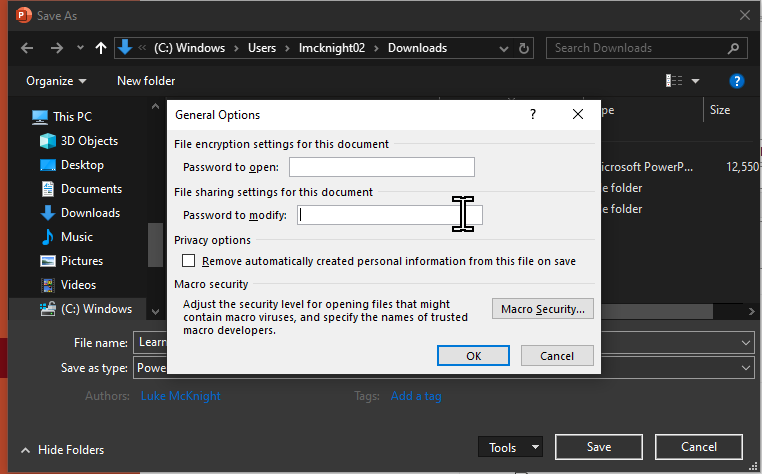
- Click Save.
- Distribute your PowerPoint. Users will be notified that they can only open a read-only version of the file.
Remove Speaker Notes
To remove your speaker notes before distribution, first make a copy of your PowerPoint for distribution, then:
- Select File > Info.
- Click Check for Issues button beside Inspect Presentation
- Select Inspect Document
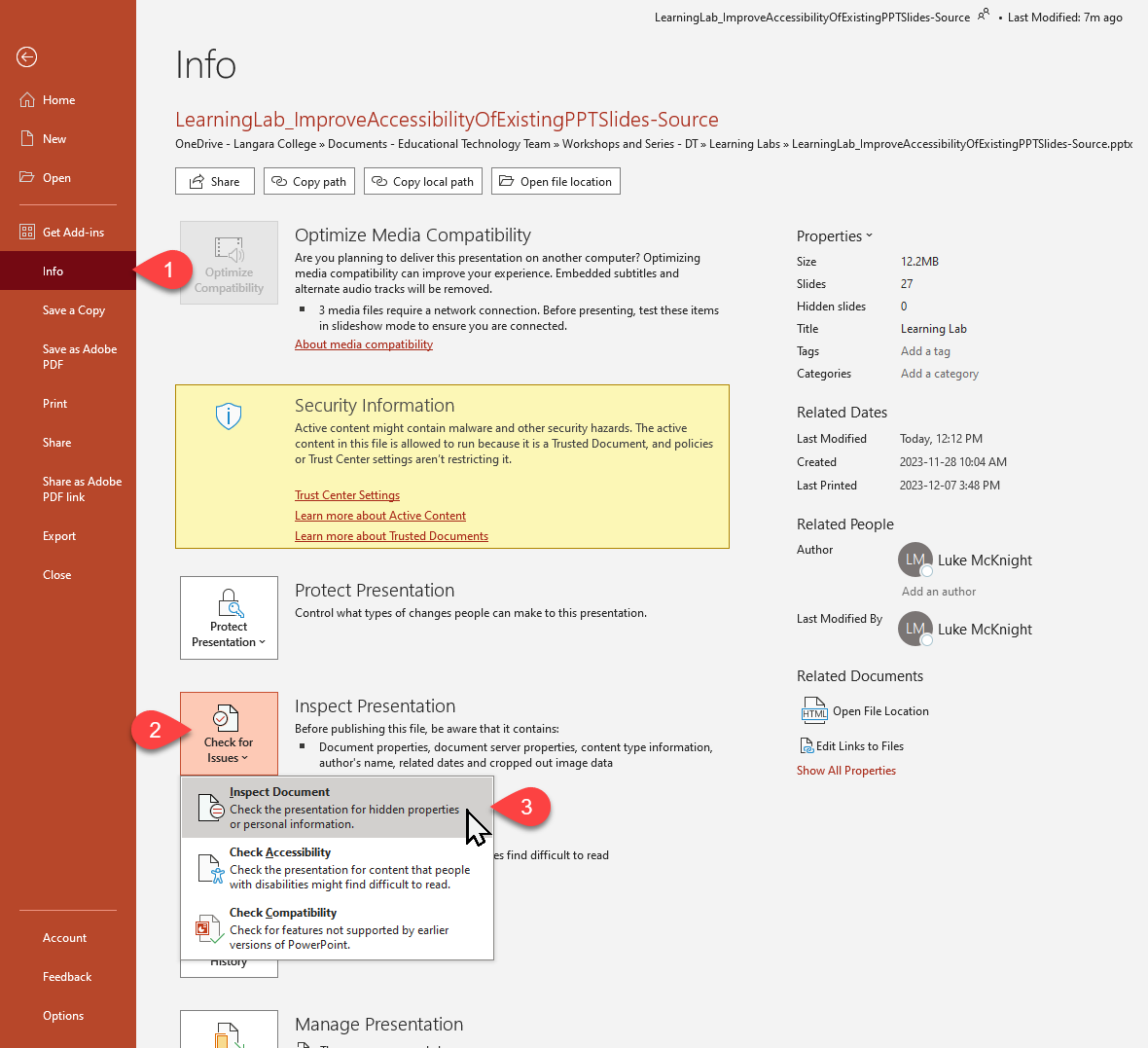
- Click Inspect in the new window.
- Once the operation is complete, click Remove All beside Presentation Notes.
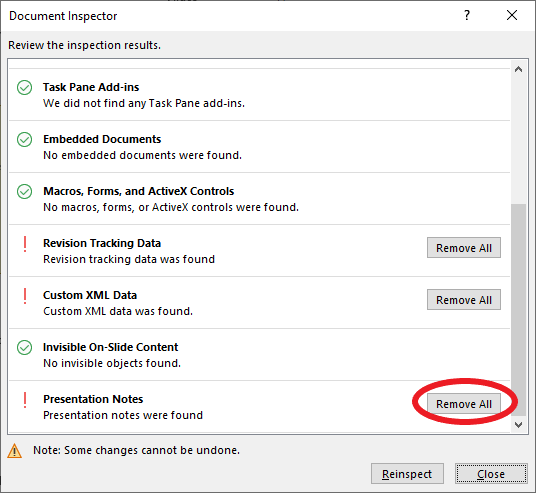
- Click Close when done.
- Save and distribute this note-free copy.
Export to PDF
The best way to use PDFs is sparingly.
The knowledge and time needed to make accessible PDFS rarely justifies the use of PDFs. PDFs require significant coding to make accessible, do not reflow content to fit different size monitors, and should be used only when necessary.
Do not use File > Print > Save as PDF as that method does not retain any document structure and requires significant time and expertise to make an accessible file.
If you absolutely must create a PDF and have Acrobat installed:
- Open File > Save as Adobe PDF
- In the save dialogue, select Options and ensure the following are checked:
- Enable Accessibility and Reflow with tagged Adobe PDF
- Create Bookmarks
- Convert Word Headings to Bookmarks
- Click Ok and then Save.
Without Acrobat installed:
- Open File > Save as or Export.
- Enter file name and select save location.
- (Windows) Select PDF in Save as type list.
- Choose Options and select Document structure tags for accessibility check box.
- Select Ok.
- (MacOS) Select PDF from File format drop down.
- Select Best for electronic distribution and accessibility (uses Microsoft online service) radio button.
- Select Save.
- (Windows) Select PDF in Save as type list.

